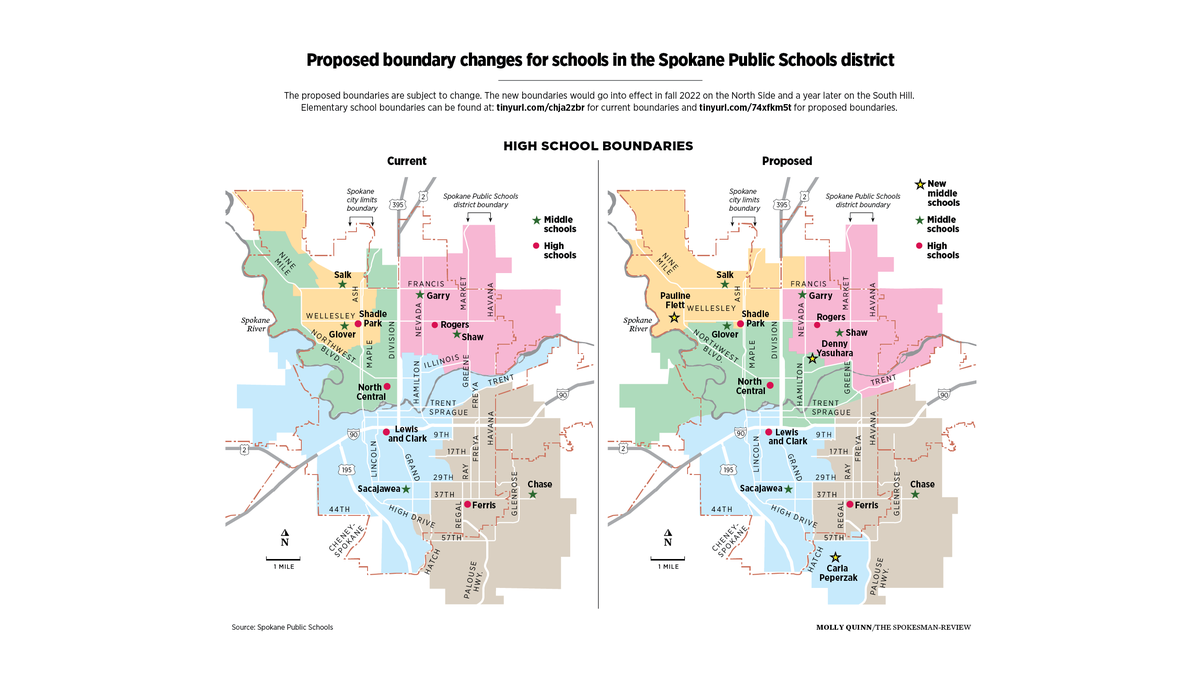Spokane school board approves sweeping boundary changes

Reassured that equity issues will be addressed in the future, the Spokane Public Schools board agreed Wednesday night to approve a comprehensive redrawing of the district’s boundaries.
The 5-0 decision caps almost 18 months of work by the district and its Boundary Adjustment Committee, numerous and sometimes acrimonious public forums and, finally, three lengthy discussions in as many weeks by the board.
The first major redraw of district boundaries in almost 40 years, it was forced by the pending addition of three new middle schools and the shift of sixth-graders to those schools.
The new boundaries will take effect in the fall of 2022 in north Spokane and a year later on the South Hill.
“There has been a lot of disagreement over this topic,” board President Jerrall Haynes said after the vote. “We understand that not everybody in this community is going to agree with this.”
That was also true for the board members – especially Jenny Slagle, who had questioned the proposal on equity grounds and urged reconsideration in two previous meetings. For example, new Denny Yasuhara Middle School in northeast Spokane will have a free-and-reduced-lunch percentage of around 90%, while the upper South Hill’s new Carla Peperzak Middle School will draw on a more affluent demographic.
However, it was Slagle who reconsidered Wednesday.
“I’m grateful that you gave me time to find answers to the questions,” Slagle said. “The community will continue to hold us accountable in each of our decisions.”
The proposal leans heavily on cohorting – keeping the same groups of students in the same schools as they advance through elementary, middle and high schools – as well as placing students in schools within walking distance of their homes. But it appears to take a step backward on equity.
In Wednesday’s presentation, the district revisited proposals to mitigate the disparities between its richest and poorest schools.
Those would include lessening the impacts on students “inordinately affected by the boundary changes,” exploring the placement of magnet programs at North Side high schools and examining a possible expansion of the APPLE program to K-8.
Prior to the vote, consultant Harium Martin-Morris, a former Seattle Public Schools board member, recounted that district’s success with similar measures following a redrawing of boundaries in 2009.
Martin-Morris showed two startling examples. At Rainier Beach High School, graduation rates soared from 57% to 92% following conversion to an International Baccalaureate curriculum.
At Cleveland High School, introduction of a STEM program contributed to a graduation rate increase to 99% from 48%.
Decades earlier, the district attempted to achieve racial socioeconomic balance through busing and saw enrollment drop by almost half.
Board member Mike Wiser pointed to another factor in approving the boundary change.
During earlier meetings, Wiser had suggested some minor tweaks to the boundaries.
“But to get there, we’d have to bring the community back together,” Wiser said. “You would literally have to start from scratch.”
“I don’t think further delays would be helpful,” Wiser said.